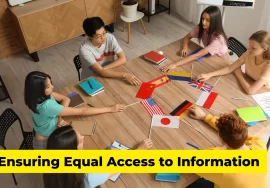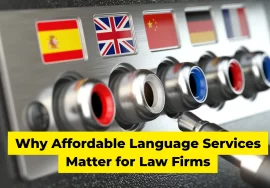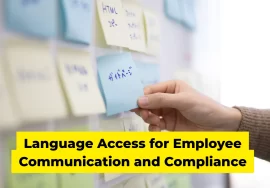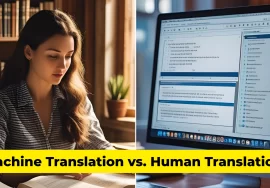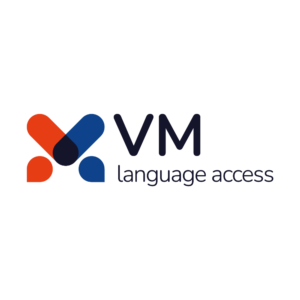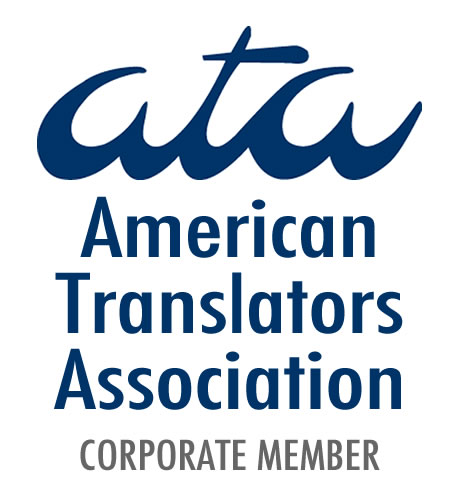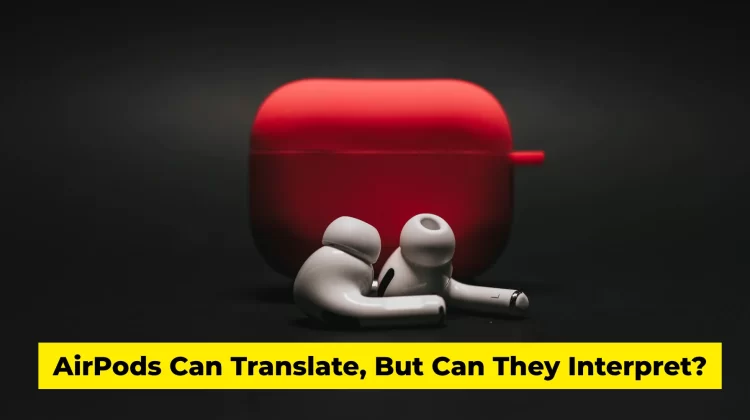
AirPods Can Translate, But Can They Interpret?
Technology is changing faster than ever, and with each new update, it promises to make our lives easier. When Apple introduced the idea that AirPods could translate in real time, many people wondered if this meant the end of language barriers. Imagine being able to travel, meet clients, or help patients across different languages without needing a human interpreter. It sounds like something out of a sci-fi movie, doesn’t it? But here’s the thing: while AirPods can translate, they cannot interpret. And that difference is huge.
In professional settings like healthcare, legal proceedings, and education, communication is about more than just words. It’s about understanding context, emotion, and culture. That’s where human interpreters remain irreplaceable. Let’s take a closer look at what technology can do, where it falls short, and why professional interpretation is still essential for clear, meaningful communication.
The Rise of AI Translation Tools
In the past decade, language technology has evolved dramatically. We now have mobile apps and devices that can perform instant translations in dozens of languages. AirPods, powered by AI-driven systems like Siri and integrated translation apps, are one of the latest tools promising seamless multilingual communication.
How Earbuds Like AirPods Became Mini Translators
When Apple launched its translation capabilities, it sounded revolutionary. Users could speak into their phones or earbuds and get instant translations into another language. Travelers saw it as a breakthrough tool for ordering food, asking for directions, or greeting someone in a foreign country. The appeal was clear: small, affordable, and fast.
These tools use machine learning to recognize patterns in languages, translating text or speech almost instantly. They are excellent for basic, everyday exchanges. But when conversations become complex or emotionally charged, the limitations become obvious.
The Appeal of Instant Translation
There’s no denying that instant translation tools have made global communication more accessible. Small businesses use them to interact with international customers. Tourists rely on them to navigate foreign cities. Even students use them to better understand foreign-language materials.
The convenience and affordability are what make them attractive. You don’t need to hire a professional or schedule an interpreter; you just press a button. But convenience often comes at the cost of accuracy, tone, and context. And when you’re dealing with sensitive topics, a single mistranslated phrase can have serious consequences.
Where Technology Hits Its Limits
While devices like AirPods can recognize and translate words, they lack understanding. Human communication is not just about vocabulary; it’s about nuance, emotion, and cultural meaning. AI translation tools still struggle with all of that.
Translation Is Not the Same as Interpretation
One of the biggest misunderstandings in the world of language services is the confusion between translation and interpretation. Translation deals with written text, while interpretation deals with spoken communication in real time. Interpretation requires listening, processing, and rephrasing the speaker’s message almost instantly while preserving tone, intention, and context.
AI can translate a sentence, but it cannot interpret the deeper meaning behind it. For instance, in a medical consultation, a patient may express fear or discomfort not through words but through tone or hesitation. A human interpreter recognizes that and adjusts communication accordingly. AirPods, on the other hand, simply translate what is said, missing the emotional cues that are crucial for understanding.
Why AI Struggles With Context and Tone
Machines work based on data. They identify words, analyze patterns, and generate likely translations. But they don’t understand sarcasm, idioms, humor, or cultural references. Consider this example: in English, saying “break a leg” is a way to wish someone good luck. In Spanish or French, a literal translation of that phrase would sound absurd or even alarming.
This lack of contextual awareness leads to frequent errors, known as “Google Translate accuracy issues,” and it applies equally to AirPods or similar tools. When the meaning of a sentence depends on culture, tone, or shared understanding, machines simply cannot keep up.
The High Stakes of Misinterpretation
A mistranslation can be funny when you’re reading a restaurant menu abroad. But in professional contexts, it can lead to confusion, legal issues, or even harm. In a hospital, a misinterpreted instruction could affect a diagnosis. In court, it could alter the meaning of testimony. In schools, it could prevent parents from understanding vital information about their children’s education. These are not minor mistakes; they are moments where accuracy determines outcomes.
The Human Element: What Professional Interpreters Bring
While AI focuses on speed, human interpreters focus on understanding. Their expertise goes beyond knowing two languages. They interpret meaning, emotion, and culture. That’s something no machine can do.
Cultural Sensitivity and Emotional Intelligence
A professional interpreter does not just translate words; they convey feelings and intent. For example, in some cultures, direct speech is seen as rude, while in others, it’s expected. An interpreter recognizes these nuances and adjusts the message accordingly. They ensure that communication remains respectful and clear across cultures.
AI translation tools, including AirPods, lack this emotional intelligence. They cannot detect discomfort, sarcasm, or hidden meanings. This is why cultural sensitivity remains one of the most critical aspects of professional interpretation.
Accuracy and Confidentiality
In many industries, accuracy is non-negotiable. Legal document translation services, medical interpretation, and social service communication require absolute precision. Beyond accuracy, confidentiality is another crucial element. Interpreters are bound by professional ethics to protect the privacy of the people they serve.
AI tools, however, process data through servers and algorithms that may not be secure or compliant with privacy laws. This can lead to breaches of confidentiality, especially when dealing with sensitive information in healthcare or government contexts.
Real-Time Adaptability
Another strength of human interpreters is adaptability. They can handle unexpected changes in tone, context, or topic. During live conversations, speakers may shift emotions, change subjects, or use regional slang. Professional interpreters respond in real time, ensuring communication remains fluid. Machines, by contrast, can freeze, misinterpret, or mistranslate when confronted with non-standard speech patterns or background noise.
Why AI Translation Tools Can’t Ensure Safety or Compliance
For institutions like hospitals, schools, and government agencies, using AI tools for interpretation may seem like a budget-friendly option. However, it often comes with risks that outweigh the cost savings.
Legal Risks of Relying on AI for Interpretation
Federal laws such as Title VI of the Civil Rights Act require that all individuals have equal access to information, regardless of their language. In healthcare, HIPAA protects the confidentiality of patient information. Using non-professional, automated translation tools can violate these regulations because they lack the necessary privacy and accuracy standards.
When organizations rely on technology instead of trained interpreters, they risk non-compliance, lawsuits, and loss of trust from their communities.
Potential for Misinformation and Liability
Imagine a scenario where a patient misunderstands a medical prescription because the AI mistranslated it. Or a defendant’s testimony is incorrectly interpreted in court. These are not just communication errors; they are situations that can lead to harm and legal liability.
Machines are not accountable for their mistakes, but institutions are. That’s why it’s essential to rely on certified human interpreters who ensure both linguistic and ethical accuracy.
When Accuracy Matters Most: Real-World Scenarios
Healthcare Settings
In healthcare, a patient’s life can depend on accurate interpretation. Doctors and nurses rely on interpreters to ensure patients understand diagnoses, treatments, and risks. A small error in translation can have serious consequences. Professional interpreters are trained to handle medical terminology and emotional sensitivity, creating an environment where patients feel heard and respected.
Legal Proceedings
In courtrooms, precision is vital. Every word carries legal weight. Certified legal interpreters ensure that nothing is misrepresented or omitted. Relying on AirPods or similar devices would be unthinkable in such settings because machines cannot understand tone, intent, or legal nuance.
Education and Social Services
Communication between teachers and non-English-speaking parents is essential for student success. Interpreters help families engage fully in their children’s education, from IEP meetings to school events. Using human interpreters fosters trust and inclusion, while automated tools can create distance and confusion.
The VMLA Solution: Human-Centered Language Services
At VM Language Access, we believe technology should support communication, not replace it. Our team of professional interpreters and translators bridges language gaps while maintaining empathy, confidentiality, and cultural understanding.
Professional Interpreters You Can Trust
VMLA’s interpreters are carefully vetted, highly trained, and experienced across industries like healthcare, law, education, and government. They understand the stakes involved in every conversation and ensure messages are conveyed with accuracy and compassion.
Bridging Technology and Humanity
While we use technology to streamline processes, our focus remains on the human element. Translation memory tools, secure data management, and virtual interpreting platforms enhance efficiency without compromising quality. VMLA combines the best of both worlds.
Commitment to Accuracy, Empathy, and Compliance
VMLA’s mission is to make communication accessible, accurate, and culturally aware. We ensure compliance with Title VI, HIPAA, and other language access requirements while helping organizations deliver inclusive services that respect every individual.
The Future of Interpretation: Collaboration, Not Competition
Technology is not the enemy of interpreters; it’s a partner. As AI evolves, it will continue to improve accessibility. But machines will always need human oversight to ensure messages remain meaningful and accurate. The goal is not to replace interpreters but to empower them with better tools.
VMLA embraces innovation while staying true to its human-centered values. We believe that technology should enhance empathy, not erase it.
AirPods can translate, but they cannot interpret. They may help travelers ask for directions or translate simple phrases, but they cannot capture tone, emotion, or culture. When communication truly matters, when lives or legal outcomes depend on understanding, only human interpreters can ensure accuracy and trust.
VMLA stands for clarity, compassion, and connection. Our mission is to bridge language barriers with integrity and excellence. So, the next time you think about relying on a device to communicate across languages, remember: understanding another person goes far beyond words. It takes a human touch.





